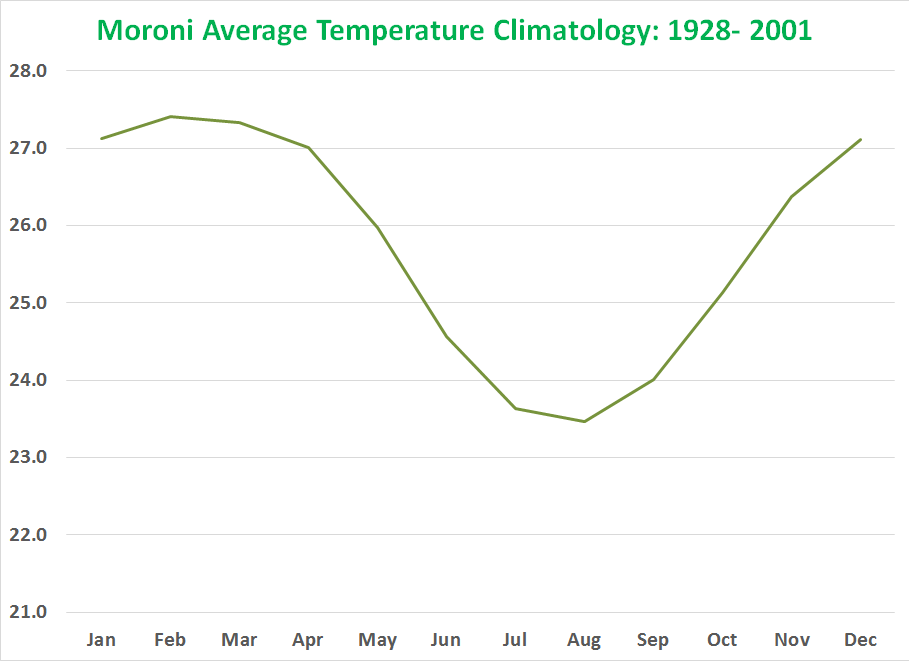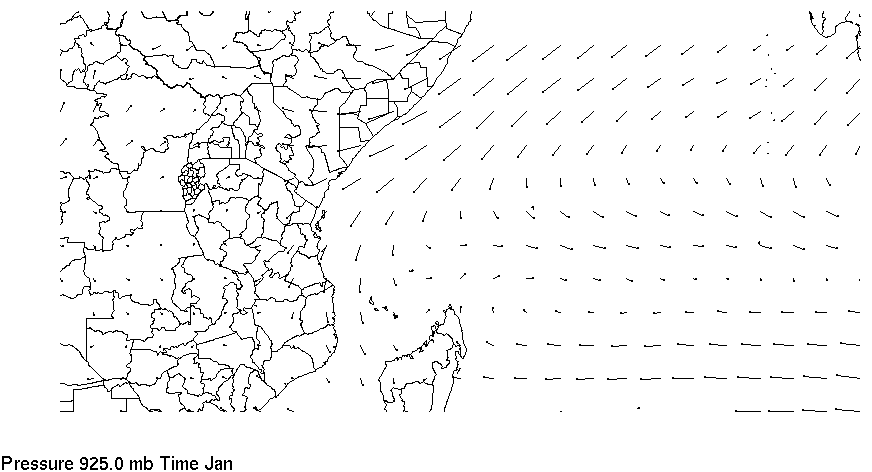

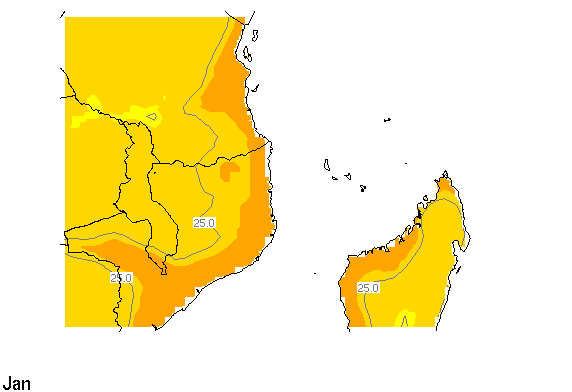

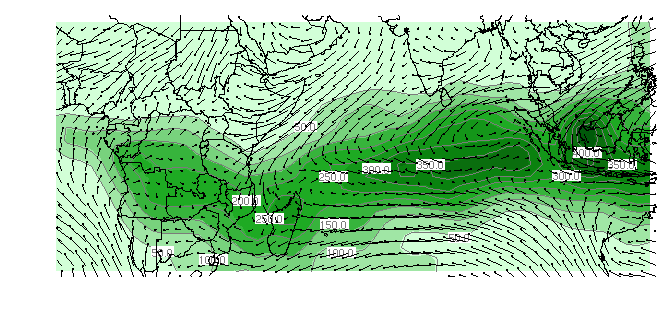

Following three figures show the precipitation climatology of Foumbouni, Koimbani and Moroni areas of Grande Comore island. Both Foumbouni and Koimbani are in the eastern coast of the island while Moroni is in the western coast of the island. These plots show that higher precipitation is observed in December to March and during July and August lower precipitation is observed. Precipitation is shown in millimetres.
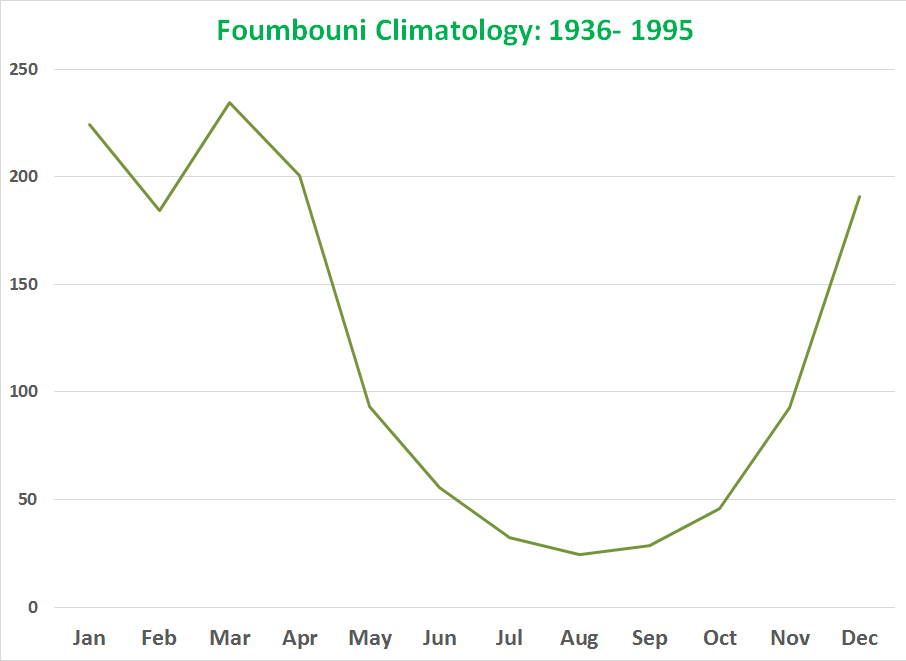
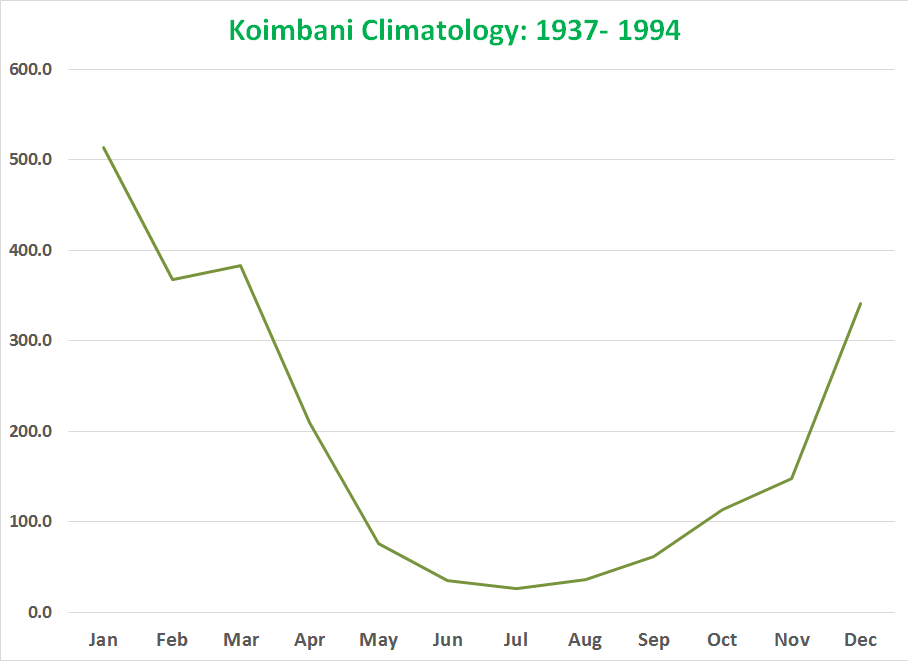
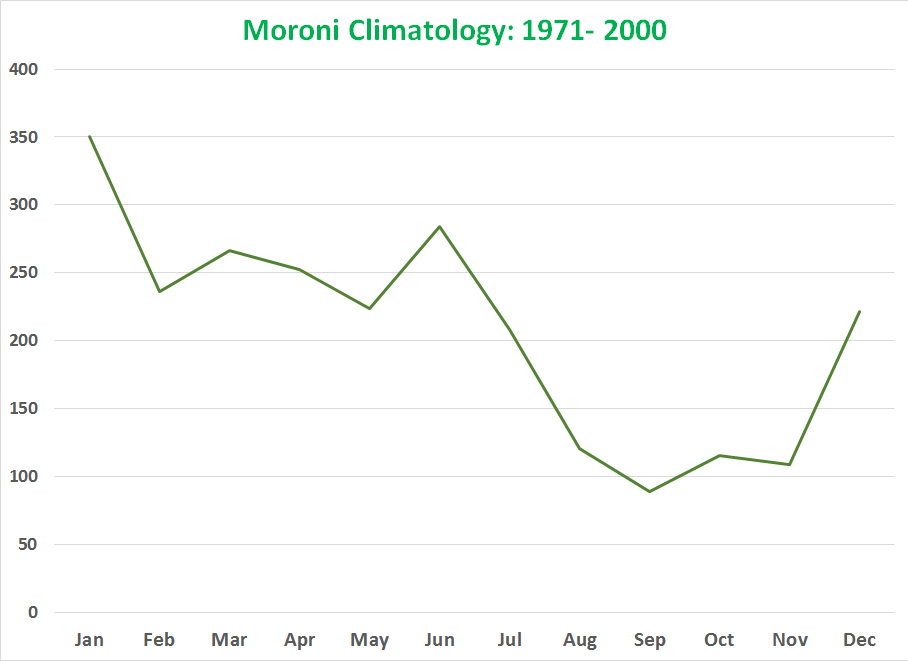
Following figure shows the average temperature climatology of Moroni. The temperature is shown in degrees Celcius.
